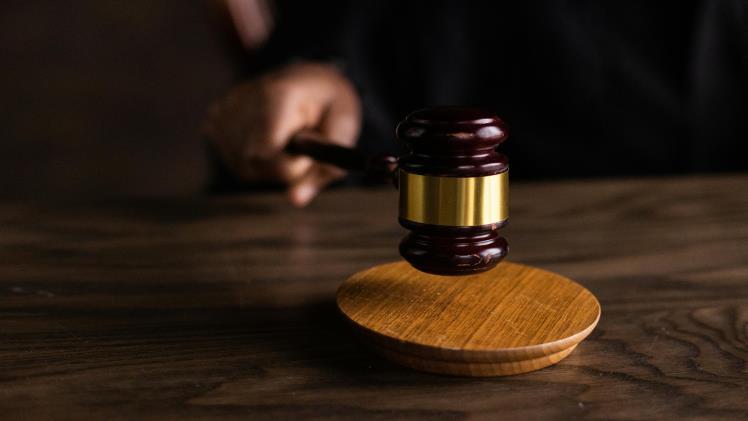The dark side of opioid addiction treatment is being exposed through a rapidly expanding multi-district litigation. Suboxone, once celebrated as a lifesaving drug for those battling opioid dependence, is now under scrutiny. Recently uncovered documents suggest that the manufacturer may have caused a different kind of suffering that’s deeply troubling.
Let’s delve into the latest developments in the growing Suboxone MDL lawsuit.
Overview of Lawsuits Regarding Suboxone and Dental Issues
In recent years, there have been significant legal developments related to the prescription medication Suboxone. Many lawsuits have focused on issues of tooth decay and other serious dental problems experienced by patients taking Suboxone.
The lawsuits claim that the manufacturers of Suboxone, a drug frequently prescribed for opioid addiction treatment, neglected to warn patients about potential risks adequately. Additionally, they allege that healthcare providers were not properly informed about the associated dangers.
“Suboxone teeth lawsuits,” or cases particularly pertaining to tooth issues brought on by the medication, have become more prevalent. This is due to many reported cases of patients developing severe oral infections, tooth enamel damage, and other dental injuries after using Suboxone film or tablets as prescribed.
Not only have individual legal claims filed, but class action lawsuits have also emerged where groups of affected individuals have joined their legal challenges.
TruLaw says that manufacturers failed to disclose the risks of permanent tooth decay, gum injuries, and other dental issues associated with taking Suboxone as directed. These dental-related Suboxone lawsuits are centered on this argument.
Both branded and generic versions of Suboxone, including sublingual strips and tablets, have allegedly led to deteriorating dental health for some patients requiring extensive dental work like tooth extractions.
If you or a loved one has experienced dental problems and you are wondering, “Can I still apply for a Suboxone lawsuit?” then contact a seasoned lawyer. Proper legal guidance can help determine options for seeking compensation.
Timeline of Lawsuits and Regulatory Actions
The first Suboxone dental damage lawsuit was filed in September 2023 in federal court in Ohio. By November of that year, over 100 similar lawsuits had been initiated in various federal courts across multiple states. The majority of cases were brought in Ohio. To date, none of these lawsuits alleging dental injuries from Suboxone have been resolved.
In January 2024, the Panel on Multidistrict Litigation met to discuss consolidating the federal Suboxone cases into a multidistrict litigation (MDL). An MDL could streamline the resolution of the claims. However, no order to establish an MDL has been issued yet.
The manufacturers previously faced antitrust class actions from the FTC and states alleging anti-competitive practices regarding generic competition. RB Group settled with the FTC in 2019 for $50 million, and Indivior settled in 2020 for $10 million. Indivior also settled various other payers’ antitrust suits from 2023, totaling over $425 million.
Additionally, both companies faced criminal and civil charges from the DOJ and states related to deceptive marketing. Indivior resolved these charges in 2019, agreeing to pay $600 million. RB Group settled in 2019, paying $2.1 billion.
The Suboxone MDL Continues to Grow
In a recent brief submitted to the court, the plaintiffs’ steering committee argued that a tolling arrangement in the Suboxone multidistrict litigation (MDL) would be efficient and fair to implement.
They emphasized how MDLs are intended to promote judicial efficiency, and tolling agreements would enhance this goal by streamlining individual lawsuits while ensuring equitable treatment of all parties.
The key point is that a statute of limitations can only be suspended or extended if both plaintiffs and defendants agree to a tolling agreement. This would take pressure off the court clerk by reducing the number of individual lawsuits required to be filed within statutes of limitations. It would allow for more substantive work like factual and expert development to proceed without stringent deadlines for filing each case.
The plaintiffs cited precedents set by other recent MDLs that utilized tolling agreements.
Currently, plaintiffs face pressure to file individual lawsuits due to the defendant rejecting a tolling agreement. This prevents attorneys from fully investigating claims that are brought near expiring statutes of limitations.
Without a tolling agreement in place, non-meritorious claims could congest the MDL process. The plaintiffs offered alternatives like providing proof of product use via medical records to streamline the process, but the defendant declined.
If individual filings remain required, the plaintiffs reasonably request the defendant be compelled to respond to all complaints in a spirit of equity. Over 486 Suboxone lawsuits have now been consolidated in the relevant federal court. This highlights the rapid growth and increasing workload strain without measures to simplify the process.
FAQs
1. What is the time limit for filing a Suboxone lawsuit?
A: The statute of limitations for product liability claims based on “failure to warn” is two years in several states. Since Indivior, the manufacturer of Suboxone, was required to add tooth decay as a warning on its label in January 2022, the deadline for filing such lawsuits in states with a 2-year limit expired in January 2024.
2. Is Suboxone considered a narcotic drug?
A: Suboxone is an opioid medication, and the Drug Enforcement Administration (DEA) classifies opioids as narcotics. However, the term “narcotic” is often used to refer to substances that produce a high and are commonly abused, which may not be the case with Suboxone.
3. How can I join a Suboxone class-action lawsuit?
A: The current Suboxone lawsuits are not class-action suits. Instead, multiple individual lawsuits may be consolidated into a single case, known as multidistrict litigation (MDL), in a mass tort case. This consolidation is different from a class-action lawsuit. Previously, there was a class-action lawsuit against the manufacturers of Suboxone for antitrust allegations. However, that case has been resolved, and all payments to class members have been made.
To conclude, the Suboxone MDL continues its rapid expansion. Exposing troubling claims regarding manufacturers’ actions, establishing an efficient and fair process remains crucial. A tolling agreement could help reduce flooding of the courts while claims are evaluated, allowing focus on meaningful investigation and resolution. Streamlining appears necessary given the escalating scale of litigation, whether through negotiated compromise or judicial mandate.






